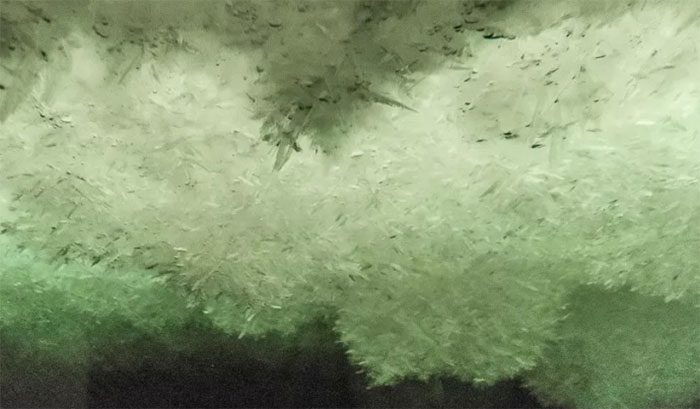Scientists Unravel the Mystery of Europa’s Icy Shell, the Moon of Jupiter Believed by NASA to Harbor Life.
“In exploring Europa, we are interested in the salinity and composition of the ocean, as these are key factors that will influence its potential habitability or even the type of life that may exist there,” said lead author Natalie Wolfenbarger from the Institute for Geophysics at the University of Texas at Austin, explaining the goal of the study, as reported by Sci-News.

Frazil ice in Antarctica, likely resembling the structure found on the intriguing extraterrestrial world of Europa – (Photo: HELEN GLAZE)
To investigate this, researchers examined how the icy crust enveloping Europa’s ocean is formed. Their findings revealed that at least part of this mysterious shell is composed of pure snow that has risen to the surface of the ocean, rather than falling from above.
The study published in the journal Astrobiology refers to this as the “frazil ice layer,” a soft accumulation of ice crystals also found beneath icebergs on Earth.
According to Live Science, frazil ice contains a portion of the salt found in ice on Earth’s ice shelves, but it is significantly less salty than what scientists previously thought about Europa’s icy shell.
The prevalence of frazil ice on Europa creates a substantial difference in the composition of this moon’s icy crust. While aggregated ice can contain up to 10% of the salt from the surrounding seawater, frazil ice contains much less, only about 0.1%.
This lower salinity in the ice not only affects the structure and strength of the icy shell but also impacts the success of the radar systems on the Europa Clipper, the “warrior” that NASA plans to use to directly capture signs of life on this Jovian moon.
Understanding the composition of the icy shell also helps future Europa Clipper mission operators fine-tune their systems to better detect the types of life that may be present.
Europa has long been referred to by NASA as the “Earth’s twin in space” due to its remarkably Earth-like conditions. The most intriguing aspect that scientists are eager to explore is a potentially warm, life-filled subsurface ocean, well-protected from radiation and cold by its icy crust.


















































